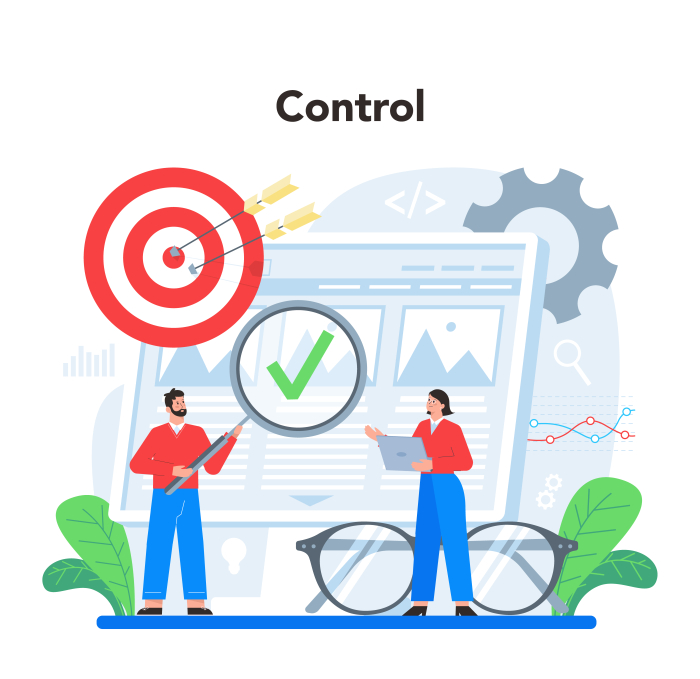
 Data Structure
Data Structure Networking
Networking RDBMS
RDBMS Operating System
Operating System Java
Java MS Excel
MS Excel iOS
iOS HTML
HTML CSS
CSS Android
Android Python
Python C Programming
C Programming C++
C++ C#
C# MongoDB
MongoDB MySQL
MySQL Javascript
Javascript PHP
PHP
- Selected Reading
- UPSC IAS Exams Notes
- Developer's Best Practices
- Questions and Answers
- Effective Resume Writing
- HR Interview Questions
- Computer Glossary
- Who is Who
Keeping an Eye on Project Management Risks
While many businesses want to take chances and adopt innovative strategies, others are afraid of taking risks. Some project managers, however, see the positives in these attempts and make calculated decisions that balance resources for future growth while still focusing on solid results. Rather than focusing solely on known successes, or an organization's predicted outcomes, project managers understand how grasping a contingency plan can help with unexpected turns of events and fast mitigation.
As a project manager, it's your responsibility to assess the risks involved with each project you take on. The key is understanding the risks and coming up with the best solution for them. To do this, you need to start by clearly understanding what each project involves and its objectives and goals. A common understanding between all team members ensures success on all levels.
What Do You Understand by Project Risk?
Project risk is an unintentional effect that's hard to predict. There isn't a way to control or mitigate every potential risk, but thinking about them ahead of time can make your project more likely to succeed and save it from failing. This can have a positive or negative impact on the project.

Project Charter
The first step is ensuring the project is run well. The project charter authorizes and identifies the authorities responsible for various aspects of the project. You can only have a good project by identifying your business needs, so you need a formal project description. Not only that, but it's helpful to address any potential risk hindering your progress with appropriate mitigation measures before moving forward.
Risk Management Template
Risk management must be included in each and every project. One of the best ways to implement this is through a risk management template. You can create these templates by using online tools and software. This template guides the entire team and helps them better plan and mitigate risks before they happen.
Examining the Steps of Project Risk Management
Responsible for determining the risk
Sometimes risks are identified
Qualitative and quantitative data are collected as part of the analysis
Which risks should you monitor?
Risk Response Planning: How to Keep Forward Momentum
Steps to Mitigate Risk
Step 1 ? Define the project goals and owner's expectations
Step 2 ? Determine the potential risks
Step 3 ? Create a list of information sources to implement countermeasures for each of the risks
Step 4 ? Create a list of contingency plans for actions that may need to be taken
Preparation of Risk Identification
The identification process and risk management are crucial prerequisites for every project. The purpose of projects should be explored to explain their goals, intent, and expectations.

Understanding the Risks Categories
All risks must be categorized due to the range of threats that business projects face. These are categorized into four specific risk categories, and the categories themselves can even be used as traceable in case further identification is necessary.
Technical risks
Risk is always a tricky topic, especially when you're talking about technology. Risks associated with unfamiliar software can be made more difficult when the technology changes between the time of development and delivery. There are other types of risks, as well, such as quality risks, which relate to performance and quality expectations.
Organizational risks
There are lots of risks that may come up with the implementation of a project. These are some organizational risks that are involved in the operations. You must work together to make sure your project is organized and efficient and doesn't put you in any unnecessary trouble.
Risks of project management
If you're taking on any project management assignments and old-school methods aren't serving your needs, then it's time for a change. There are many innovative software tools like Risk Register, Root Cause Analysis, SWOT, and many more that you can include ensuring the smooth running of operations like time tracking, budgeting, and monitoring of commitments.
External risks
When a project isn't progressing as expected, it may be because of a variety of factors outside the project boundaries. These include legal issues, shifting priorities, labor issues, environmental issues, and political barriers. In these situations, you'll have to make a disaster recovery plan rather than moving on with your usual flow.
Techniques of Risks Management
Brainstorming
You should use a brainstorming process to list all the risks associated with your project. The brainstorming team should include members from other disciplines such as business, IT, marketing, and finance.
Delphi techniques
Delphi makes sure your project gets the attention it needs by rallying all stakeholders around an agreed-upon risk assessment process. Risk assessment experts use our best technology to solicit all ideas and data in order to stabilize outcomes and minimize bias, while the process keeps everyone on the same page.
Identification of root causes
By using this risk management process, you and your team are able to better control the risks. This also allows for better management and the development of effective responses.
Interviewing
When it comes to risk identification and solutions creation, you want to make sure that all individuals involved in a project are interviewed for their opinion.
SWOT analysis
SWOT is a well-known assessment tool for assessing potential risks. It examines the whole length and breadth of the project to identify problems.
Assumption analysis
All software is developed based on a set of hypotheses, assumptions, and scenarios. This tool helps you design better hypotheses, reduce inconsistency and accuracy, and complete your projects more efficiently.
Checklist analysis
Checklists have gained the continued favor of project managers, as they help to accumulate all risks associated with a past project.
Conclusion
Risk management is about keeping your eyes and ears open while staying on top of the details. As the project manager, you'll have to keep everything in perspective while being careful not to miss anything.

